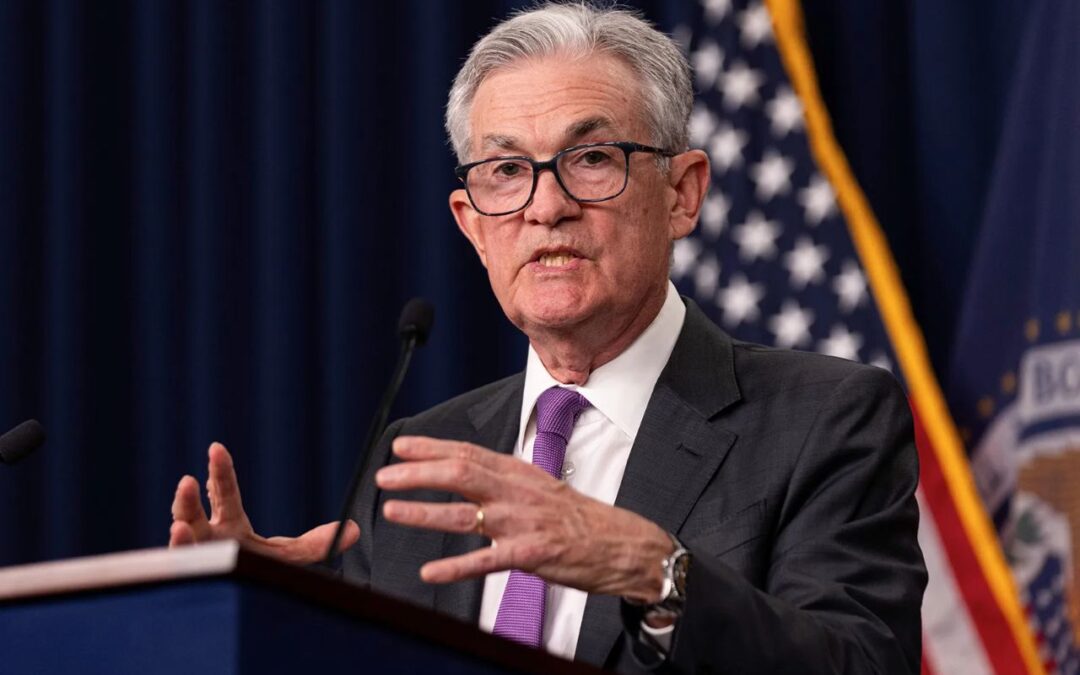The Federal Reserve is widely expected to cut interest rates in September 2025, a move that could revive Bitcoin’s basis trade, which has remained subdued this year. The basis trade profits from the price difference between Bitcoin’s spot market and futures contracts. Looser monetary policy may boost liquidity and risk appetite, leading to increased futures premiums and open interest on the CME, the largest U.S. derivatives exchange for Bitcoin.
Decline in Bitcoin Futures Interest and Basis Trade
Bitcoin futures open interest on CME has fallen sharply from above 212,000 BTC at the start of 2025 to approximately 130,000 BTC today. This decline roughly matches levels seen when spot Bitcoin ETFs launched in early 2024. Meanwhile, on an annualised basis, the return earned by exploiting the futures premium has remained under 10%, half the level observed at the end of 2024. This reflects tighter funding conditions, slower ETF inflows after their initial surge, and reduced risk appetite among investors.
Alongside this, Bitcoin’s trading volatility has been very low. Implied volatility recently hit a near-record low of 35, making futures premiums less attractive and limiting arbitrage opportunities. Institutional leverage remains light, further suppressing demand for basis trade strategies.
How a Fed Rate Cut Could Revitalize the Market
The CME FedWatch tool estimates a 90% chance that the Federal Reserve will cut the federal funds rate by 25 basis points in mid-September, easing from the current 4.25%–4.50% range. Lower rates generally reduce the cost of borrowing, encouraging traders to use leverage for basis trades. Increased liquidity combined with stronger risk appetite could push futures premiums higher and increase open interest on CME.
Historically, Bitcoin has responded well to rate cuts, especially in times of easing monetary policy. For example, the 2019 rate cut cycle saw Bitcoin jump from $4,000 to $13,000, and 2020’s near-zero rates fuelled a surge from $7,000 to $28,000. These periods showed that easier borrowing conditions and increased liquidity helped widen the price differential between spot and futures, benefiting arbitrageurs and institutional traders alike.
Market Factors
Beyond interest rates, other factors support a potential revival of the basis trade. Spot Bitcoin ETFs launched in 2024 have brought institutional capital into the market, boosting liquidity and futures activity. Additionally, the regulatory environment looks supportive under the current political leadership, with expectations of reduced hurdles for crypto products, further encouraging institutional participation.
However, risks remain. Inflation pressures, geopolitical tensions, and recession concerns could dampen enthusiasm for risk assets like Bitcoin. The compressed volatility seen throughout 2025 could see breakdowns if economic data disappoints or if rate cut expectations shift suddenly. These elements might create short-term fluctuations but also arbitrage windows for traders.
What to Expect Moving Forward
If the Fed proceeds with rate cuts, the Bitcoin basis trade looks set to regain momentum. Lower rates will likely widen futures premiums as investors anticipate rising Bitcoin prices. This could boost CME futures open interest, increasing liquidity and enhancing arbitrage opportunities. Trader interest in basis strategies should rise, reversing the stagnation observed so far in 2025.
Nonetheless, the market will require careful navigation of potential volatility spikes and macroeconomic uncertainties. Short-term price swings could create profit opportunities, but traders must be wary of possible “sell-the-news” events or policy shifts. Overall, the combination of looser monetary policy and institutional adoption suggests Bitcoin could see a strong medium-term rally, reinforcing its role in alternative asset portfolios.
Written By Fazal Ul Vahab C H





